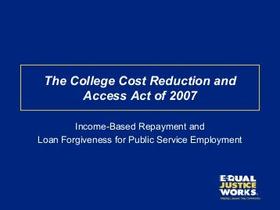Introduction
Online community college courses have become a staple of higher education delivery in 2025. What began as emergency adaptations during COVID-19 have evolved into enduring flexible options for many learners. Still, as with any modality, online classes carry both advantages and trade-offs.
This article retains the structure of the earlier “Pros and Cons of Online Community College Classes” summary, but updates it with 2025 data, trends, and real-world examples. The goal is to help prospective students, parents, and educators weigh whether online formats are a good fit today.
The State of Online Community College in 2025
Before diving into pros and cons, here’s a snapshot of where things stand now.
In fall 2022, 54 % of college students (across two- and four-year institutions) had taken at least one course online; about 26 % of students were enrolled exclusively online. Bestcolleges.com
By 2025, more than half of all college students take at least one online course, and a third enroll fully remotely.
Community colleges have seen renewed enrollment growth. In spring 2025, undergraduate enrollment grew 3.5 % year over year, and community colleges posted the largest gains (~5.4 %).
Transfer activity is increasing: community colleges saw a 5.8 % year-over-year rise in transfer enrollments, with online institutions seeing transfers climb 6.6 %—a 39 % increase since 2020.
National policy and funding pressures are real. The average published tuition and fees for full-time students at public two-year colleges in 2024–25 is about $4,050 (before aid) — significantly lower than four-year public institutions.
A notable model of a fully online community college is Calbright College in California. As of March 2025, it enrolled 6,363 students, offering career-oriented credentials to largely nontraditional learners. Wikipedia
These trends suggest online options are now baked into community college strategy—not just emergency stopgaps.
Pros of Online Community College Classes
1. Flexibility & Convenience
One of the strongest arguments for online courses is flexibility. Students can often log in at any time (in asynchronous courses) or attend from anywhere in synchronous formats. This is especially beneficial for working adults, caregivers, and those balancing multiple responsibilities.
In 2025, 63 % of students cited flexible scheduling as a primary reason for choosing online courses.
2. Cost-Effectiveness
Because students don’t pay for room, board, commuting costs, or some physical campus fees, online courses tend to be less expensive. According to recent data, many online programs cost 50–80 % less than fully in-person ones. Entrepreneurs HQ
At two-year institutions, tuition and fees are already relatively low; online options help stretch every dollar further.
3. Access & Equity
Online delivery helps reach learners who might be geographically remote, disabled, or unable to relocate. It also opens access to dual enrollment and early college programs, enabling high school students to take college credits online. Community colleges are expanding these pathways as dual enrollment now accounts for 21 % of total enrollment in some places. Watermark Insights
4. Scalability and Innovation
Online platforms allow colleges to scale offerings without building new physical classrooms. Many institutions are integrating adaptive learning software, AI tutoring, micro-modules, and modular credentials. These innovations can personalize pace and learning pathways.
5. Retention and Learning Efficiency (with supports)
Some studies suggest that online learners retain 25–60 % more material and learn faster, though results vary by course design.
When online courses include coaching, peer support, and structured community, completion rates can rise significantly—sometimes over 70 %, compared to 10–15 % in unstructured self-paced formats.
Cons of Online Community College Classes
1. Self-Discipline & Time Management Demands
Online learning demands strong self-regulation, motivation, and time-management skills. Students without these may fall behind.
Younger or less independent learners may struggle more since they may not have developed the habits needed for success in asynchronous formats.
2. Lower Completion & Transfer Rates Compared to Face-to-Face
Multiple studies show that completion rates in online courses lag behind those in traditional classes. For instance, one Washington state study found online completion is 5.5 percentage points lower, and among students taking online courses, completion is 8.2 percentage points lower than in-person.
Furthermore, students who take more online courses are slightly less likely to transfer or earn degrees.
3. Limited Face Time & Community
Online students may lose opportunities for spontaneous interactions with instructors or peers, limiting mentorship, networking, and the “campus experience.” Some learners simply perform better when in-person.
4. Technology, Access & Digital Divide
Successful online learning depends on reliable internet, devices, and technical support. Students in underserved or rural communities may face connectivity challenges.
Moreover, not all courses translate well online—laboratories, studios, and hands-on skills training often require hybrid or in-person components.
5. Institutional Support & Quality Variation
Not all colleges are equally prepared. Online learning quality varies widely depending on pedagogy, instructor training, wraparound supports (tutoring, advising), and learning management infrastructure.
Some students note struggles when support services (library, counseling, academic help) are less accessible online.
How to Maximize Success in Online Community College
Choosing the online route doesn’t mean accepting all challenges passively. Here are strategies that students, parents, and institutions should use:
For Students & Parents:
Assess your readiness. Ask: Am I disciplined? Do I manage deadlines well? Do I prefer structure?
Lean into supports. Seek out courses with built-in coaching, cohort structures, or structured peer forums.
Organize a dedicated study schedule and workspace. Treat your online class like a “real” commitment, not a side task.
Stay connected. Communicate regularly with instructors, classmates, and support staff.
Mix modalities. Some hybrid or blended courses can combine the advantages of online flexibility and in-person support.
For Institutions & Educators:
Invest in faculty training for online pedagogy and accessibility techniques.
Embed student supports (tutoring, advising, mental health) natively into the online experience.
Design for engagement. Use active learning, peer groups, low-stakes quizzes, and regular feedback loops.
Track outcomes and iterate. Monitor retention, equity gaps, and course redesign.
Forge partnerships for dual enrollment and credit transfer—both online and in-person.
Real-World Example: Calbright & Hybrid Models
Calbright College in California is a compelling case of a fully virtual community college. It began in 2018, targeting nontraditional learners and offering short-term credentials aligned with workforce skills. As of 2025, it serves over 6,300 students, nearly 90 % of whom are over age 25. However, Calbright’s journey has not been without controversy. Early critiques flagged low completion rates and challenges in student engagement. Its experience underscores that a fully online model must be robustly supported to succeed reliably.
Meanwhile, many brick-and-mortar community colleges adopt hybrid or “flexible start” models—letting students jump into course modules online and optionally attend in-person labs or tutoring. These hybrid designs often mitigate drawbacks of purely asynchronous learning.
Summary & Recommendations
In 2025, online community college classes are no longer a fallback—they are a mature, integral part of institutional strategy. They offer flexibility, access, and cost savings, but also demand self-motivation, strong infrastructure, and effective support. Completion and transfer rates still lag behind face-to-face in many cases, though well-designed online programs with embedded support are narrowing the gap.
For students and families, online community college is a viable option—if matched to one’s learning style and life obligations. For educators and institutions, success lies in investment, design, and continuous quality improvement.















